8 Native Shrubs for Year-Round Bird Feeding
Tell me if you’ve ever had this problem in your garden: One day, perhaps in winter, you’re enjoying a cup of coffee, looking out at your landscape. You’re admiring the grasses and perennials, sedges and trees, when suddenly it hits you like a freight train — there are no midstory plants, which means there’s a gaping visual hole about 5 to 10 feet off the ground. When it comes to designing outdoor spaces, it’s easy to fall in love with perennials and trees, but too often it seems like shrubs are forgotten.
A healthy ecosystem has a diversity of plants, and a beautiful garden uses that diversity to create surprising and pleasing structural elements that carry over into all four seasons. Ninety-six percent of songbirds feed only insects to their nestlings, and young insects — like caterpillars — are more likely to develop on the leaves of native plants, while the adults will feast on the nectar of blooms. And, of course, the berries keep adult birds fueled in fall and winter. Following is a list of eight native U.S. shrubs that will add structure and interest to designed spaces as well as help our winged friends.
Browse more native plants by U.S. region
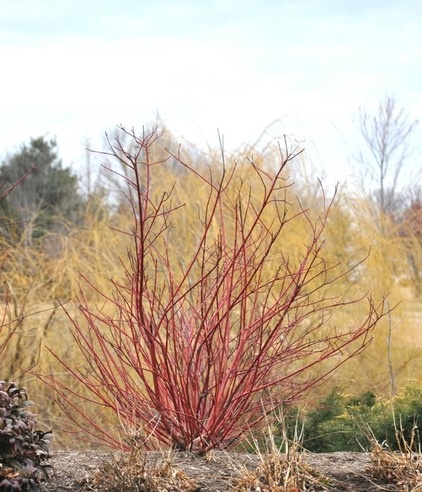
Redtwig Dogwood
(Cornus sericea)
Native to all U.S. regions except the southern Plains and the Southeast
Insects enjoy its masses of white flowers in spring, followed by tons of white berries the birds adore. Solid autumn leaf color and bright red stems follow in winter.
Redtwig dogwood prefers a wet to medium soil and does fine in clay, in full sun to partial shade. The species reaches 6 to 12 feet tall and wide, but some smaller cultivars are available. Every three years you should cut the oldest and thickest stems down to the ground, as younger shoots provide the bright red color.
See how to grow redtwig dogwood
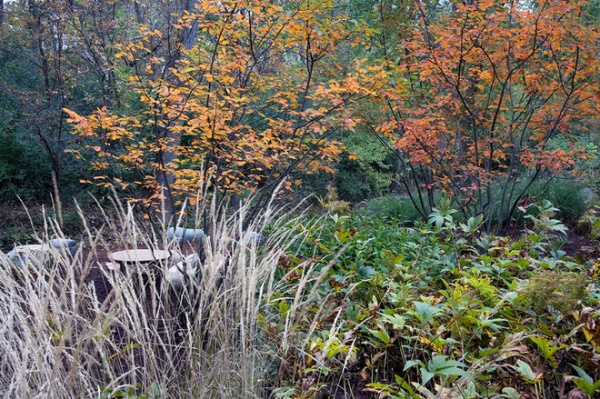
Saskatoon Serviceberry
(Amelanchier alnifolia)
Native in the U.S. from Minnesota and Iowa southwest to New Mexico and the entire West, and in most of Canada
White flowers in spring give way to sweet blue berries that you and the birds will love to eat — I swear they’re gone the second they turn ripe. The fall color is pretty strong, in the red to orange range.
Saskatoon is fairly adaptable to soil moisture and can reach a few feet to over a dozen in full sun to partial shade. A cultivar named ‘Regent’ matures at around 4 to 6 feet tall and wide and has a relatively round shape for more formal designs.
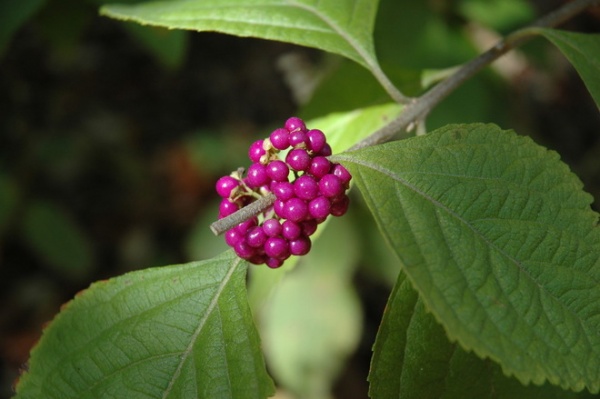
American Beautyberry
(Callicarpa americana)
Native to the Southeast and Gulf states
Beautyberry has graceful, open and arching branches that can reach 3 to 6 feet tall and wide. The young bark is a pleasing reddish brown, and the flowers, though small, are pink and densely clustered in spring.
Beautyberry prefers moist soil in shade to partial sun, from rich loam to sandy soil to clay. And do I need to mention the berries after showing you the image? Eye candy for us, multivitamins for birds.
See how to grow American beautyberry
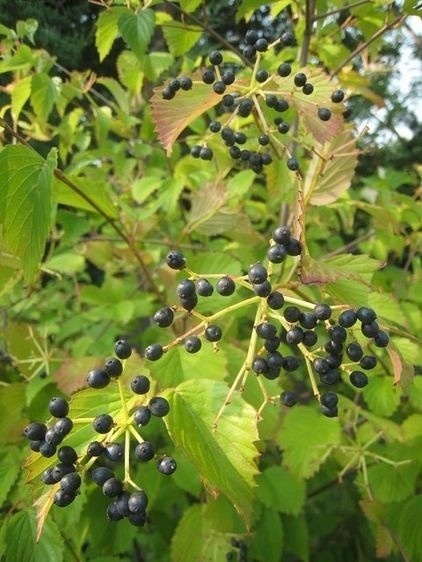
Arrowwood Viburnum
(Viburnum dentatum)
Native from Maine to Florida and west to Texas
At 6 to 10 feet tall and wide once mature, this is one of my favorite all-season, fairly drought-tolerant, go-to shrubs. Clusters of white blooms in mid to late spring support tons of insects, such as early-emerging native bees, and late summer sees dark blue berries that are quickly eaten. The fall color can be yellow, orange or red, but is always dependable. I also think it has one of the best sort of classic-looking branch structures of any shrub: full, even, symmetrical. You will need different cultivars to pollinate one another; ‘Red Feather’ paired with ‘Blue Muffin’ would work. Dry to medium soils in full to partial shade work best.
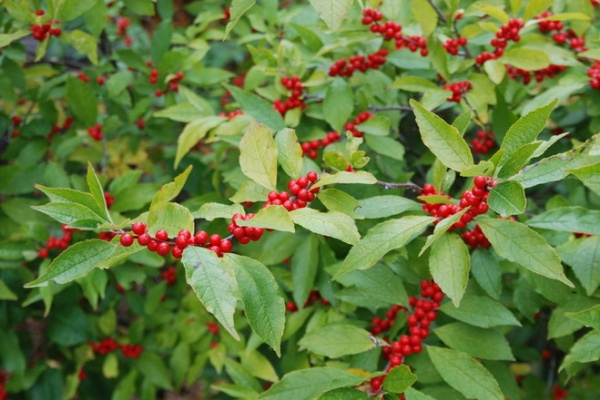
Winterberry
(Ilex verticillata)
Native to the eastern U.S.
Winterberry is our only native deciduous holly, and from late summer into winter, it puts on a very bright flush of red berries that birds and other wildlife flock to (yes, pun intended). A few freeze-thaw cycles make the berries more palatable to birds, so that means you get to enjoy their bright show for much longer. Winterberry can grow 6 to 10 feet tall and wide.
Winterberry likes medium to wet soil in full sun to partial shade. It’s perfect for rain gardens, swales and areas along rivers or ponds. Make sure you plant both male and female plants so you get the berry production.
See how to grow winterberry
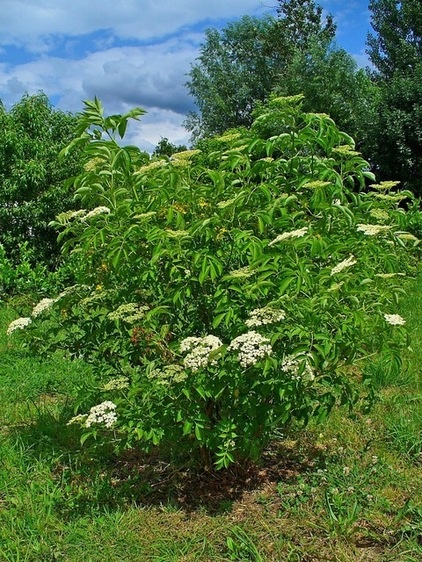
American Elderberry
(Sambucus canadensis)
Native throughout most of the U.S. except the Pacific Northwest
I admit you’ll have to give this one some room, so it’s best for larger areas or restorations. American elderberry reaches 5 to 12 feet tall and wide, with an arching habit. The large clusters of white, early-summer flowers are highly fragrant, and the subsequent dark blue to black berries are loved by a highly diverse winged friends, from prairie chickens to songbirds.
It grows in sun to shade and spreads by suckers to form colonies, especially in the humus-y, moist soil it prefers. This plant is perfect for swales and water edges, and areas where you need a thick screen.
Photo by H. Zell
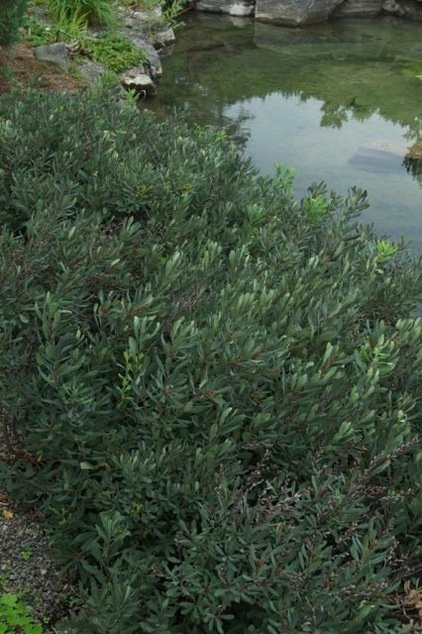
Northern Bayberry
(Myrica pensylvanica)
Native to the Northeast and the Great Lakes region
This densely branched shrub is a good hedge plant for naturalizing along slopes and riverbanks. The glossy gray-green leaves are ornamentally unique through the growing season. A plethora of white berries with a high fat content are a boon to birds deep into winter — you’ll need male and female plants for berry production.
It reaches 5 to 10 feet tall and wide in full sun to partial shade. It’s overall pretty adaptable to soil and even tolerates salt spray.
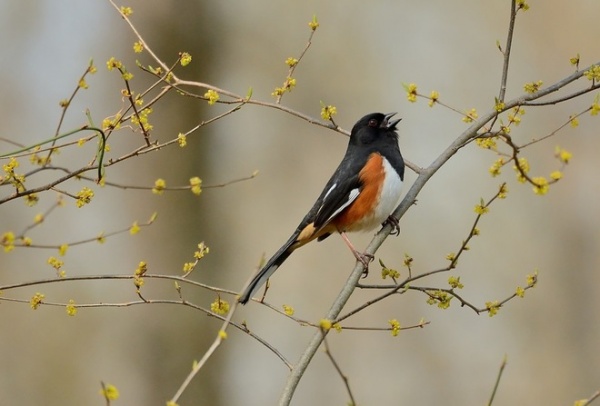
Spicebush
(Lindera benzoin)
Native from the East Coast to Missouri
Tired of seeing little wildlife on your forsythia? Try spicebush, which also puts out yellow blooms in spring but also draws insects and birds (like spicebush swallowtail, which uses it as a host plant), produces red berries in fall and has aromatic foliage that turns golden in autumn.
It prefers a good deal of shade but can take more sun if soil moisture is ample — it’s a bit fuller in full sun. At 6 to 12 feet tall, it deserves a place of prominence. Spicebush also requires male and female plants to produce fruit, so plan accordingly.
See how to grow spicebush
More:
What to do in your garden this month
See other ways to garden for the birds












